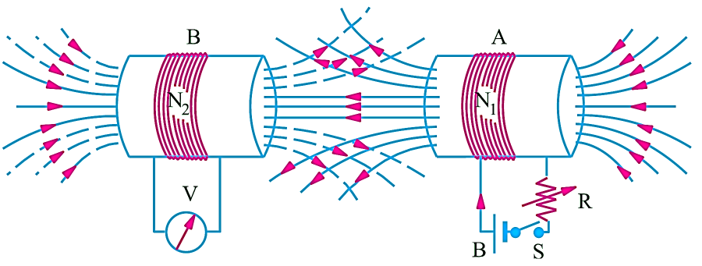In this topic, you study Induced EMF.
According to Faraday’s law of electromagnetic induction, whenever the total number of lines of force linking with the coil or the circuit as a whole changes, an e.m.f. is always induced in it. This change can be brought about by different methods. Depending on these methods, an induced e.m.f. is classified as:
- Dynamically induced e.m.f.
- Statically induced e.m.f.
Dynamically Induced EMF
The change in the flux linking with the particular coil or the circuit can be brought about by its motion relative to a magnetic field i.e. by moving the coil or the circuit in the stationary magnetic field or by moving the magnetic field with respect to the stationary coil or the circuit. The e.m.f. induced in the coil or the circuit under this condition is called a dynamically induced e.m.f. or a motional e.m.f. In practice, since the electrical generators work on the production of dynamically induced e.mf (Figure 1).

Fig.1: Dynamically induced e.m.f.
Statically Induced EMF
It is possible to change the number of lines of force linking with the coil and therefore to induce an e.m.f. in it even without resorting to its motion relative to a magnetic field. Such an e.m.f. is then designated as a statically induced e.m.f. or a transformer e.m.f. The flux linking with a coil may be its own flux produced by the current flowing through it or it may come from a neighboring coil. The e.m.f.s induced in the coil by variation of the flux in these two situations are respectively known as a self-induced e.m.f. and a mutually induced e.m.f (Figure 2).

Fig. 2: Statically Induced EMF